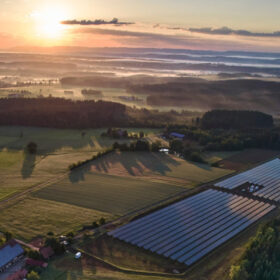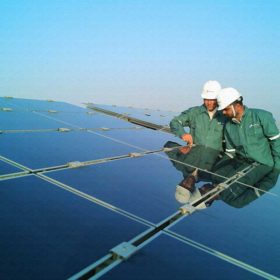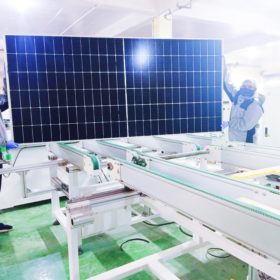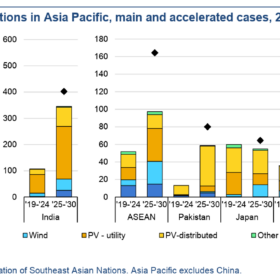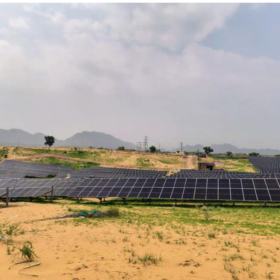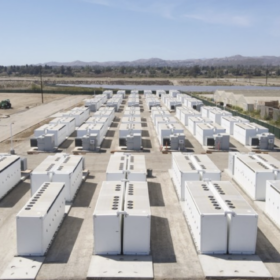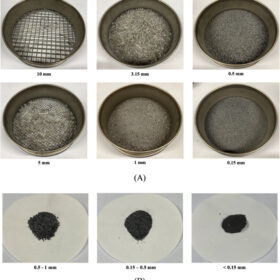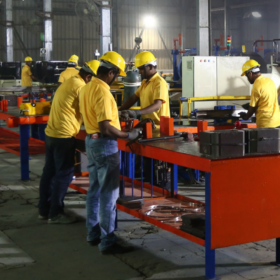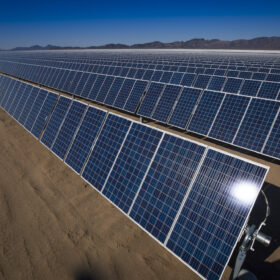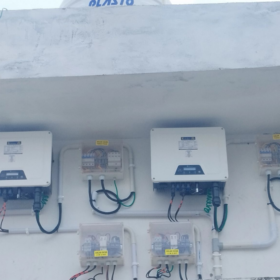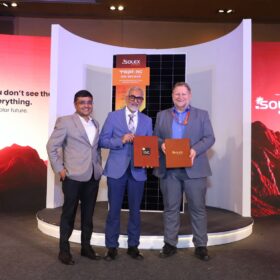Germany wraps up solar-plus-storage tender with average price of €0.0531/kWh
Germany has concluded a new renewables tender for innovative projects, securing 485 MW of capacity at final prices ranging from €0.0479 ($0.0557)/kWh to €0.0559/kWh
Sembcorp to acquire ReNew’s 300 MW solar assets in Rajasthan
Sembcorp Industries has announced the signing of an agreement to acquire ReNew’s 300 MW solar power asset in Rajasthan. The acquisition, valued at around S$246 million, will increase Sembcorp’s gross renewable energy portfolio in India to 6.9 GW.
Eastman launches ‘Solar Access LIB’ inverter with integrated lithium battery
Eastman Auto & Power Ltd has launched Solar Access LIB, an all-in-one, plug-and-play unit that integrates an inverter with a lithium-ion battery to simplify solar adoption for homes and businesses.
Scientists develop new floating box array for offshore PV
Researchers have tested a 9 x 11 floating box array for offshore photovoltaics in a large wave flume, under regular and irregular wave sequences. They have placed wireless gyroscopes on three of the boxes, representing the front, middle, and rear positions.
Saatvik Green Energy secures orders for solar PV modules worth more than INR 700 crore
Saatvik Green Energy Ltd has received orders to deliver high-efficiency solar modules worth more than INR 700 crore to projects in the Indian renewable energy market. The modules are set for delivery within FY 2025–26.
IEA revises India’s 2025-30 renewables growth forecast upward by 10%
The International Energy Agency (IEA) expects India to add nearly 345 GW of renewable energy capacity between 2025 and 2030 — a 10% increase over last year’s forecast. The upward revision is driven by record auction volumes in 2024, a new rooftop solar scheme, and faster permitting for pumped storage hydropower projects.
Scaling solar faces realities on the ground
Large-scale solar projects in India face challenges from land constraints to harsh climates and technical losses. This article explores five key roadblocks and how installers are navigating around them.
Operational faults cut returns in 19% of battery storage projects
A recent report from battery intelligence firm Accure reveals that while most battery energy storage systems operate reliably, nearly 19% of projects experience reduced returns due to technical issues and unplanned downtime.
New sieving tech for solar cell silver recovery
Researchers at University of New South Wales have reported details about a novel sieving-aids technology that improves the separation of metal fragments from other components when recycling end-of-life PV panels. The patented process reportedly enhances the recovery of silver.
Waaree Energies completes acquisition of 64% equity stake in transformer company Kotsons
Waaree Energies Ltd has completed the acquisition of a 64% equity stake in transformer solutions company Kotsons Pvt Ltd (KPL) for a total consideration of INR 192 crore. Consequently, KPL has become a subsidiary of the company.
